Montech Metal DT24 Premium Review
Introduction
Montech managed to skyrocket in the PC Case market within the last few years. But what about CPU Air coolers? Let's take a closer look at their Metal DT24 Air Cooler and see if it is just as surprising as their cases!
Positive
- Build Quality
- Massive Performance Overhead
- Affordable
- Very good Mounting mechanic
Neutral
- Performance only usable under high load
Negative
- A bit too loud
- 33mm Ram restriction
What's in the Box?

Montech's newest Metal DT24 air cooler comes in the usual air cooler fashion. A relatively small carton box featuring some imagery and a spec sheet.
Once unboxed, we will find the following items:
- Metal DT24 Heatsink
- 2x Metal 120 Fans
- 4x Fan clips
- Low-Noise adapter
- Mounting Hardware AMD
- Mounting Hardware Intel
- Thermal Paste
Down below we added a short summary of the spec sheet:
| Name | Metal DT24 Premium |
| Dimensions | 133.6x124x158mm (LxWxH) |
| Fan Airflow | 69CFM |
| Fan Noise | <30dbA |
| Fan Air Pressure | 2.82mm/H20 |
| Fan Name | Metal 120 PWM |
| Fan Amount | 2x |
| Fan Connection | PWM (Daysichain header present) |
| RGB | Aluminum Top Cover with ARGB line going around |
| Extras | Low-Noise-Adapter included (RPM Limiter) |
Compatibility
Although AM5 and LGA1700 are the nowadays relevant sockets, Montech made sure to include a variety of older Sockets in order to maximize the DT24's compatibility with older systems.
Down below you will find a full Compatibility-List:
| AMD | Intel |
| AM5 | LGA 1700 |
| AM4 | LGA 1200 |
| LGA 115x |
Individual Components
Fan
The Fans that come included with Montech's newest DT24 are their newly released in-house-made Metal 120 Fans ( as the obvious naming scheme might suggest).
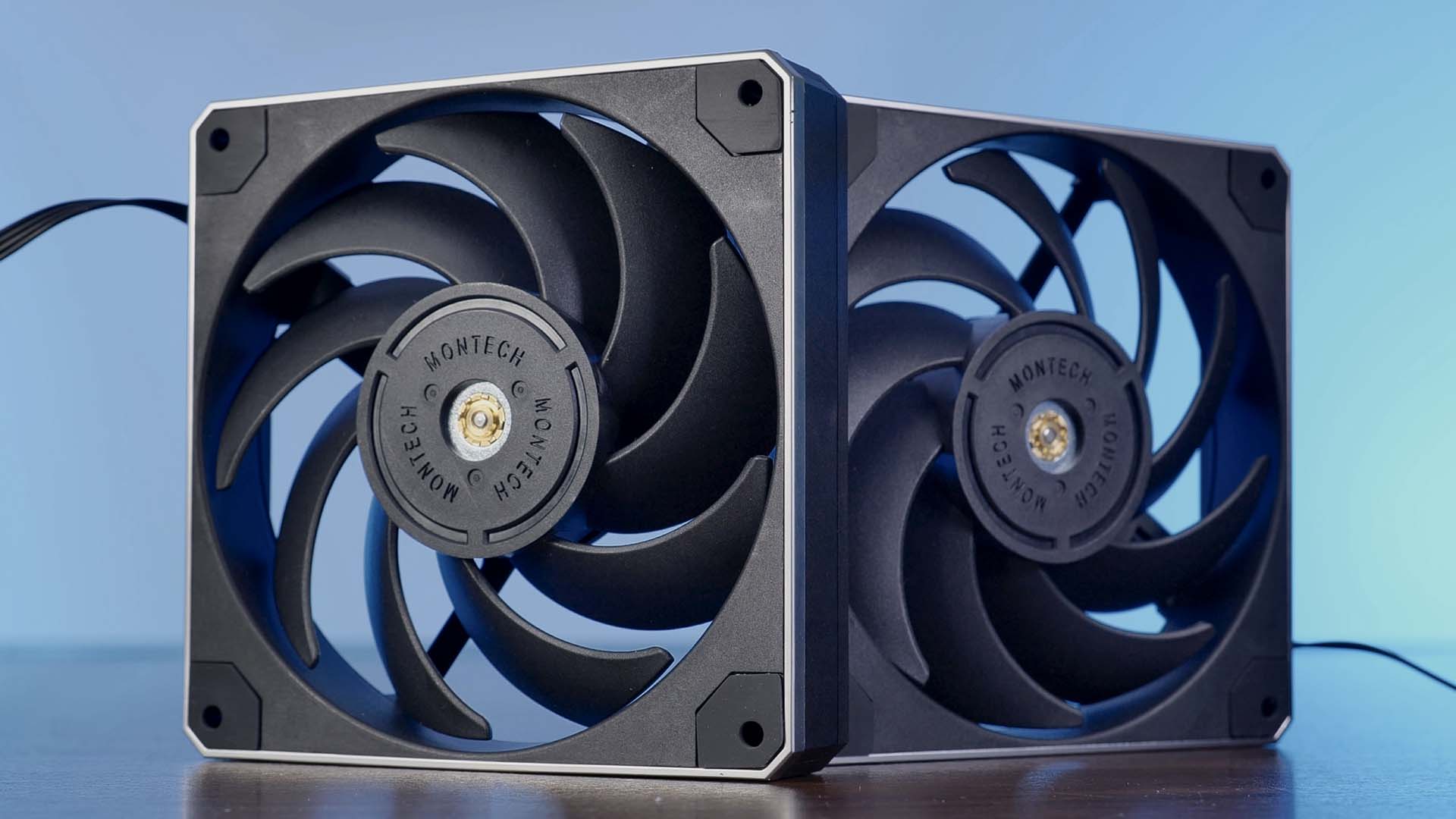
We have a dedicated review about these fans in both written and video form which we would invite you to read/watch in order to know more about these fans.
To make it short, however, the Fans have a fantastic build quality but we would consider them as being rather loud at lower fan speeds.
While spinning at up to 1950RPM, they are pushing 69CFM at 2.82mm/H2O.
Although there are two fans present in the box, Montech did not need to include a PWM splitter thanks to the PWM splitter being already present on the cable coming from each fan.
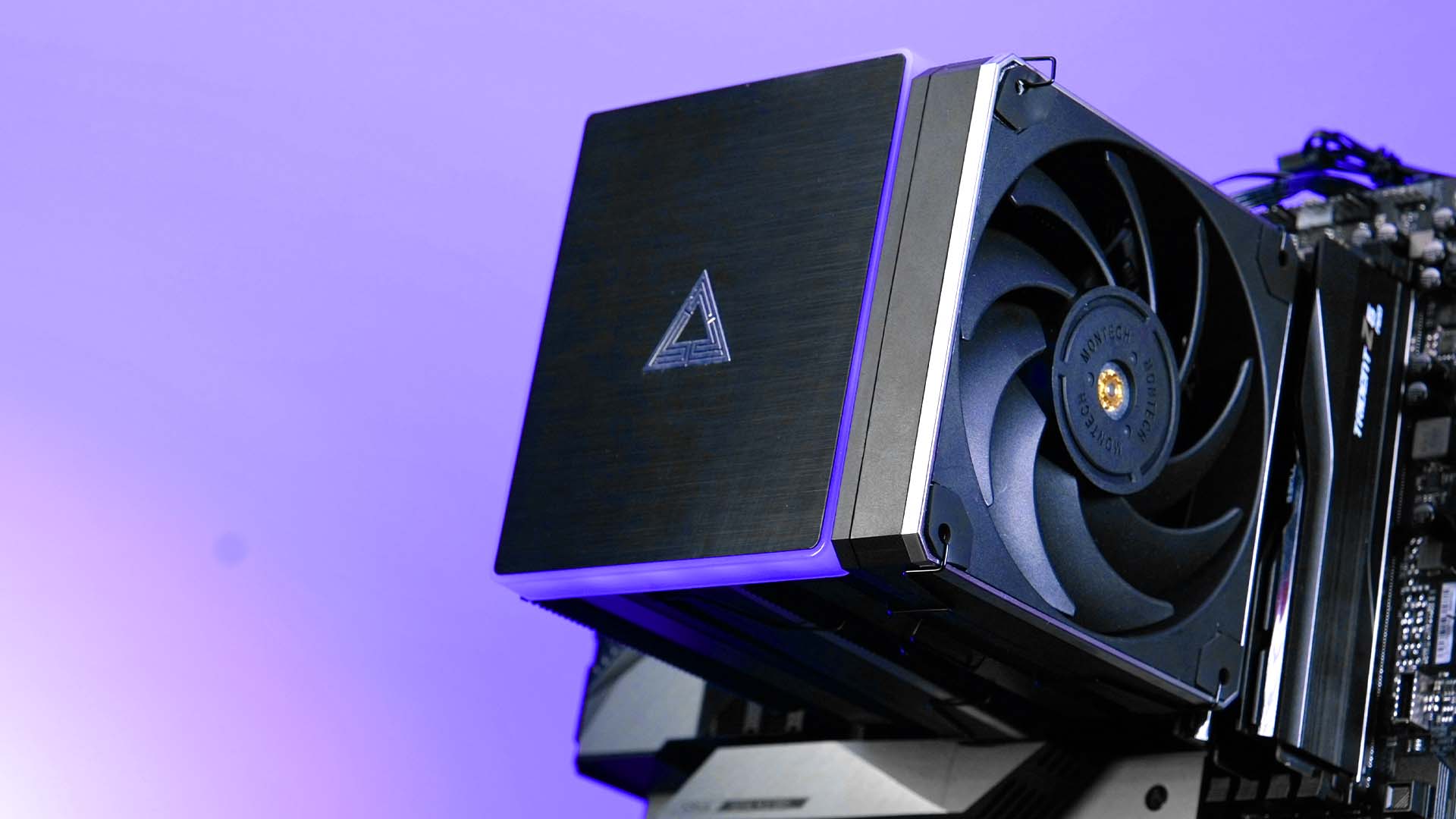
By default, we are supposed to install 1 Fan in the center of the cooler in between both heatsinks while the other one should be placed on the right side.
Doing this, however, creates a ram limitation of 33mm. Although we have the possibility to install the right fan higher in order to expand this space, we would not recommend doing so. A higher fan installation would lead the fan to be in front of the ARGB/Aluminum plate. Due to the thickness of this plate, this would then result in unnecessary noise.
If you were to use higher Ram, we would recommend installing the fan on the left side. Although this might not look ideal, it does eliminate the problem of low ran and added noise completely.
Base

The base of the cooler is made out of a relatively big nickel-plated piece of copper.
From the base upwards, 6 nickel-plated copper heat pipes are traveling up the cooler.
Heatsink

The heatsink of the Metal DT24 is made out of two individual heatsinks creating the ever-loved dual tower heatsink design.
The 158mm high black-colored heatsink is composed of 104 aluminum fins with 6x copper nickel-plated heat pipes traveling up both heatsinks.
Appearance
Montech's newest air cooler does not only carry the name "Metal", but it also looks quite "Metal". With both fans attached, the cooler looks and feels incredibly sturdy thanks to the aluminum-colored border of each fan.
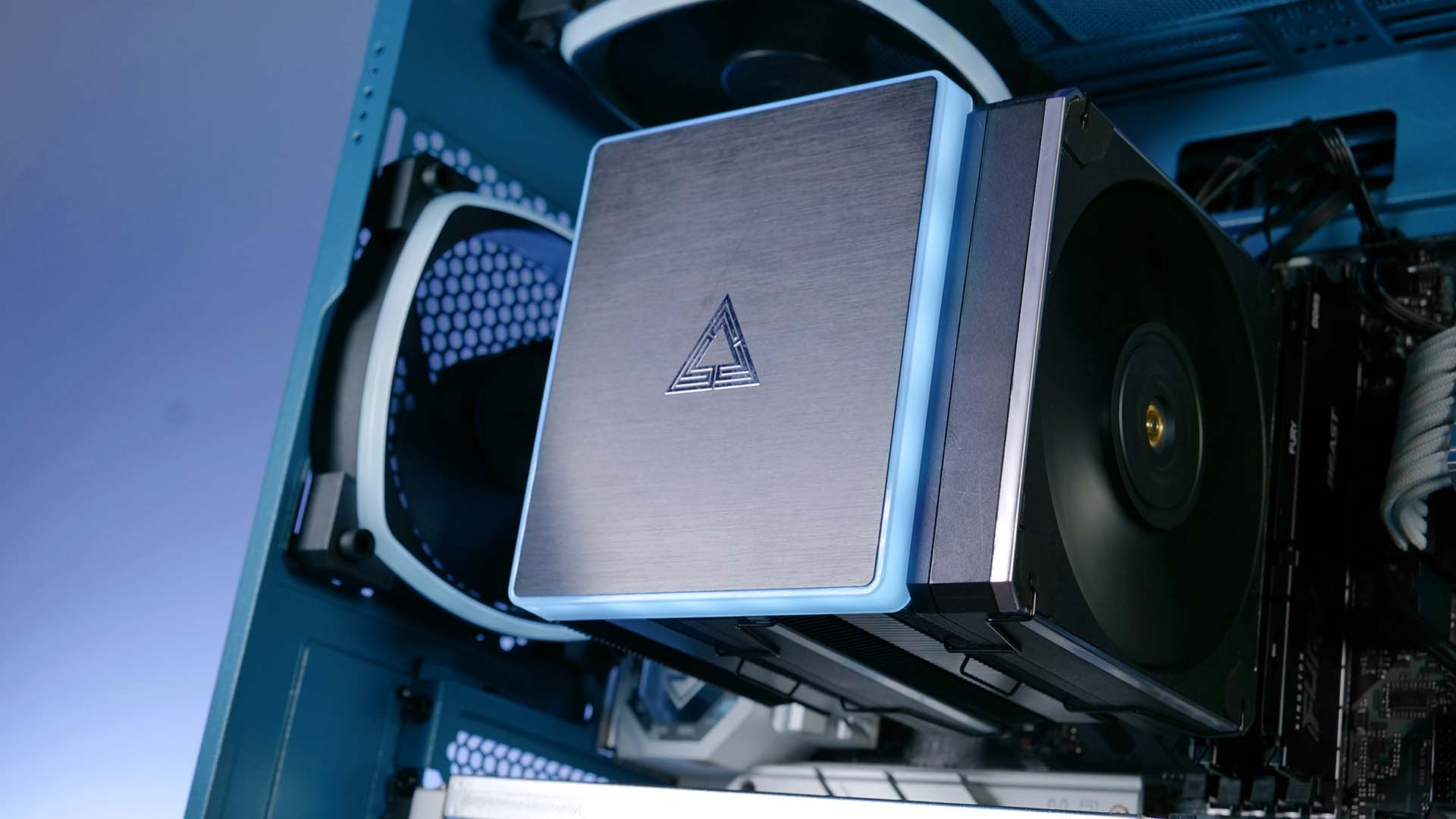
The eye candy of the cooler must be the black brushed-aluminum designed top plate of the cooler. Although it doesn't have any positive effect on the cooling performance itself, it does change the look of the cooler significantly.

Additional to the top plate being nicely designed on its own, it also provides RGB-Fans with their needed dose of rainbow power.
By using the 3-pin ARGB connection coming out of the top plate, Users can use their motherboard software to control the light traveling all around the top plate.
Benchmarks
We tested Montech's new Dual-Tower monster on top of our usual 3900x Benchmark setup.
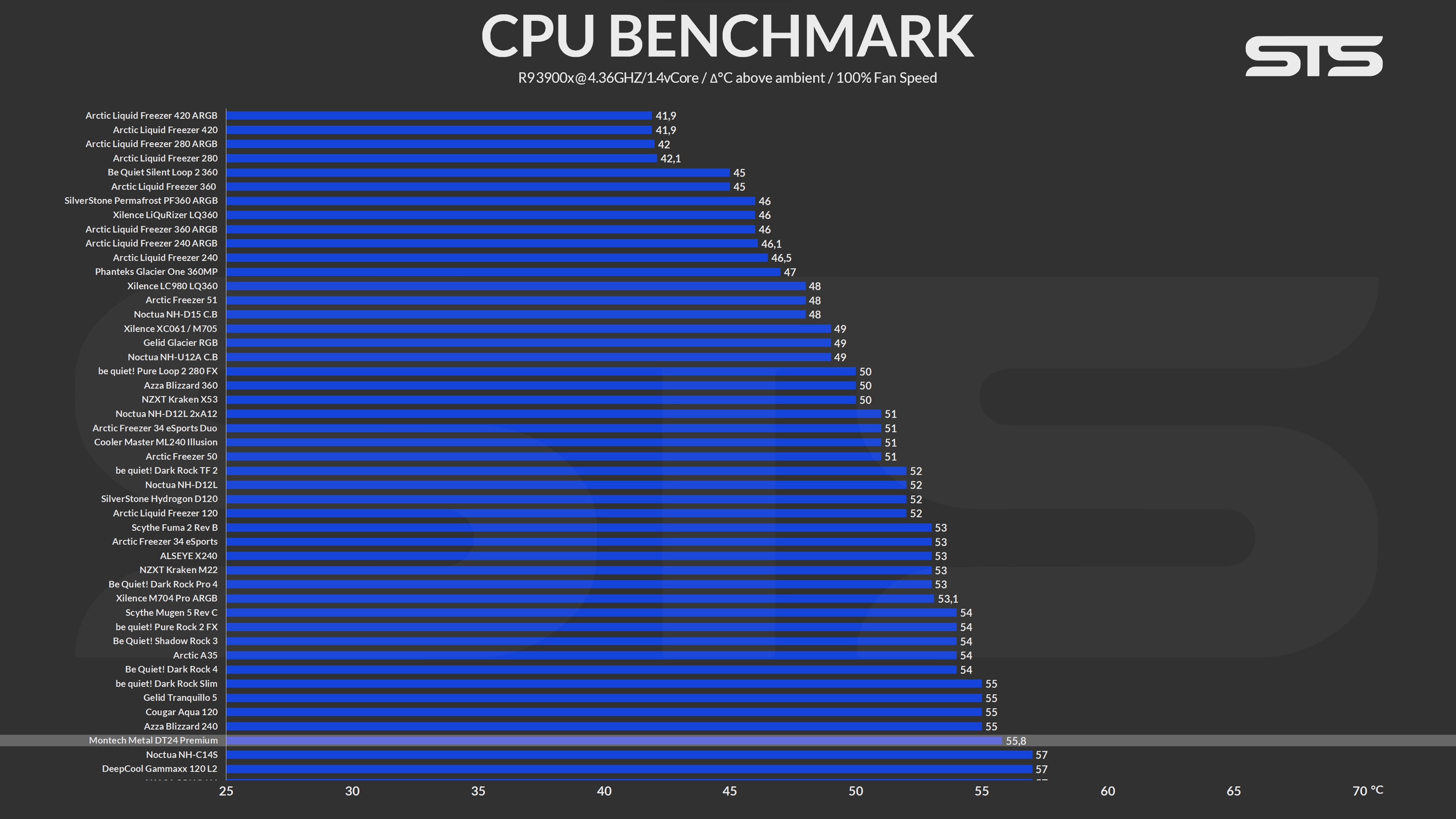
While letting the Fans spin at their max speed, the DT24 managed to keep the CPU at 55°C.
Although this doesn't seem like the best result, the noise-to-performance graph showcased that there is indeed a hidden potential inside this cooler.
Usually seen on massively oversized AIOs, the DT24 was the first Air cooler that maintained a 100% straight line From 100%-50% fan speed. This means that under the 130w load we use for our benchmark, there was absolutely 0 change in the CPU temperature.
This clearly indicated that there is a lot more performance to squeeze out of the cooler by maintaining the exact same noise level.
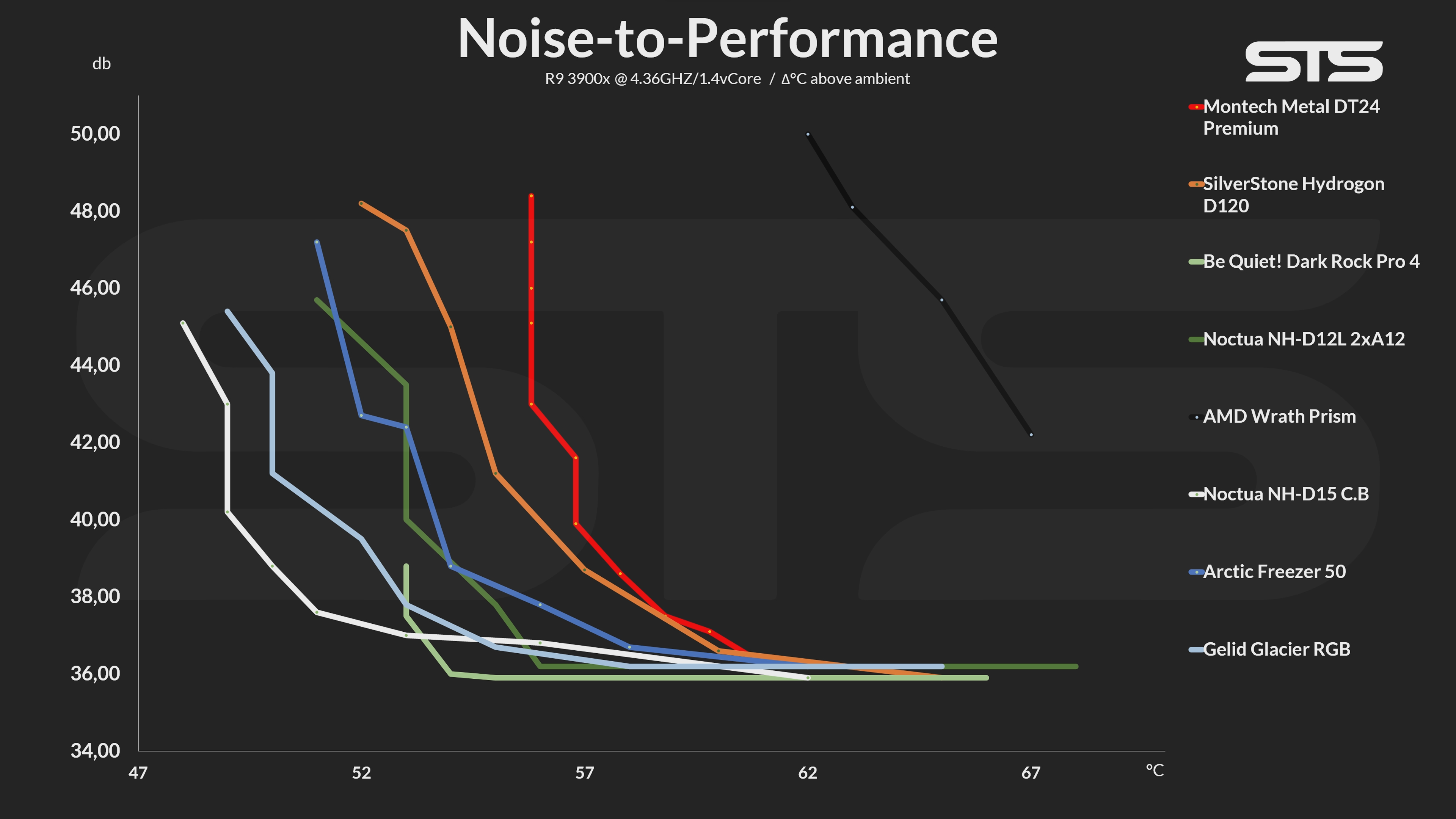
For today, however, we need to concentrate on the 130w result. And as the Noise-to-Performance graph showcased, being limited by that amount of thermal output, the DT24 wasn't able to keep a Noise-to-Performance ratio low enough to compare to other dual tower coolers in the same size category.
Conclusion
Montech's newest Metal DT24 Air cooler is an incredibly interesting product.
Quality-wise, it is nearly indestructible. The build quality is superb for every component, Fan, Heatsink, and mounting hardware alike.
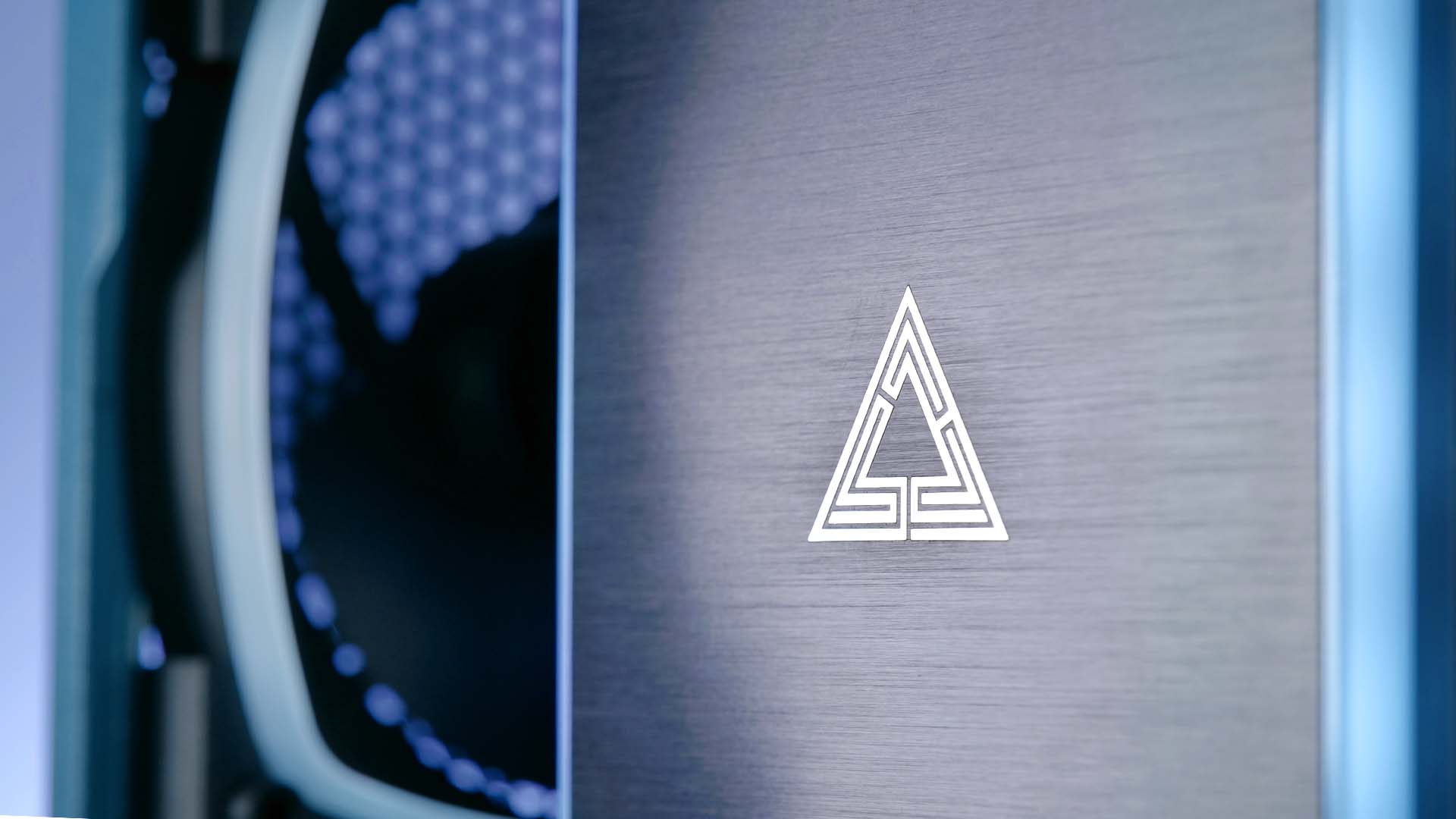
Design-wise we also believe that Montech made some progress. The top plate looks clean and easy to fit in, while the ARGB stripe around it provides the ARGB-Fans with some additional Light.
The only -truly- negative aspect about this cooler in our opinion is the heavy ram restriction. Although we can mount the right fan onto the left heatsink, it is not the intended way and might create additional issues with the back exhaust case fan. In our opinion, Montech should have made sure to lean the heatsink portion of the cooler to the left eliminating this issue entirely.
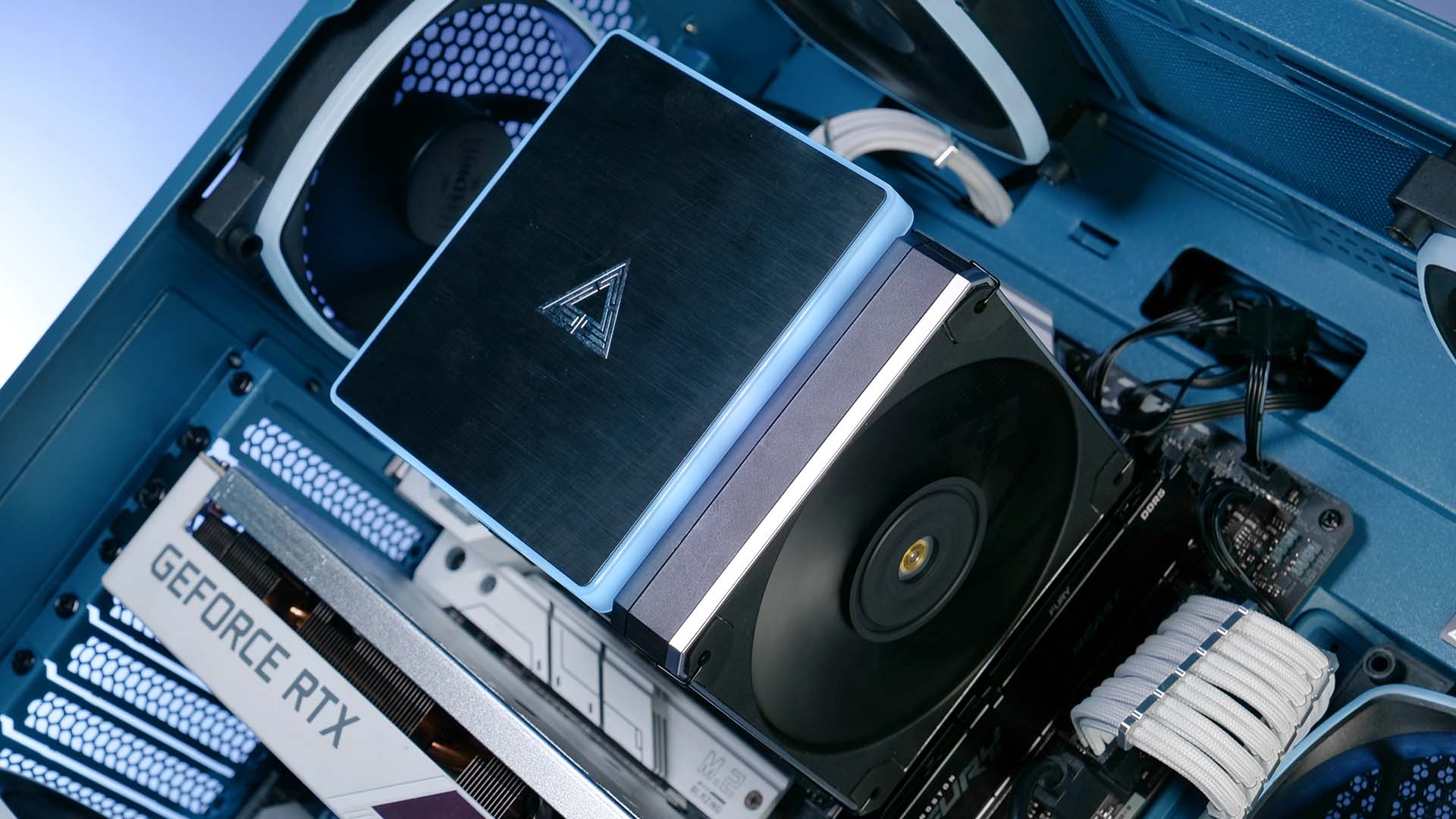
Another important aspect of the cooler is its low performance when used on "lower" TDP chips. In our benchmarks, we were able to clearly see that there is a massive thermal potential hidden inside the DT24. Our 130w workload, however, wasn't able to squeeze that potential out. Resulting in a relatively low max-performance result mixed with a high Noise-to-Performance ratio.
In our opinion, the 270w TDP spec set by Montech might not be truly "buzz-word-free", however, there might be more truth than exaggeration in this case as the Cooler will not start showing off its true potential until 150-170w thermal output.

All in all, we can recommend the cooler. However, we believe it should -only- be used for extremely high thermal outputs. Everything below a 7900x, 12900k just doesn't push out enough heat to make the cooler shine.

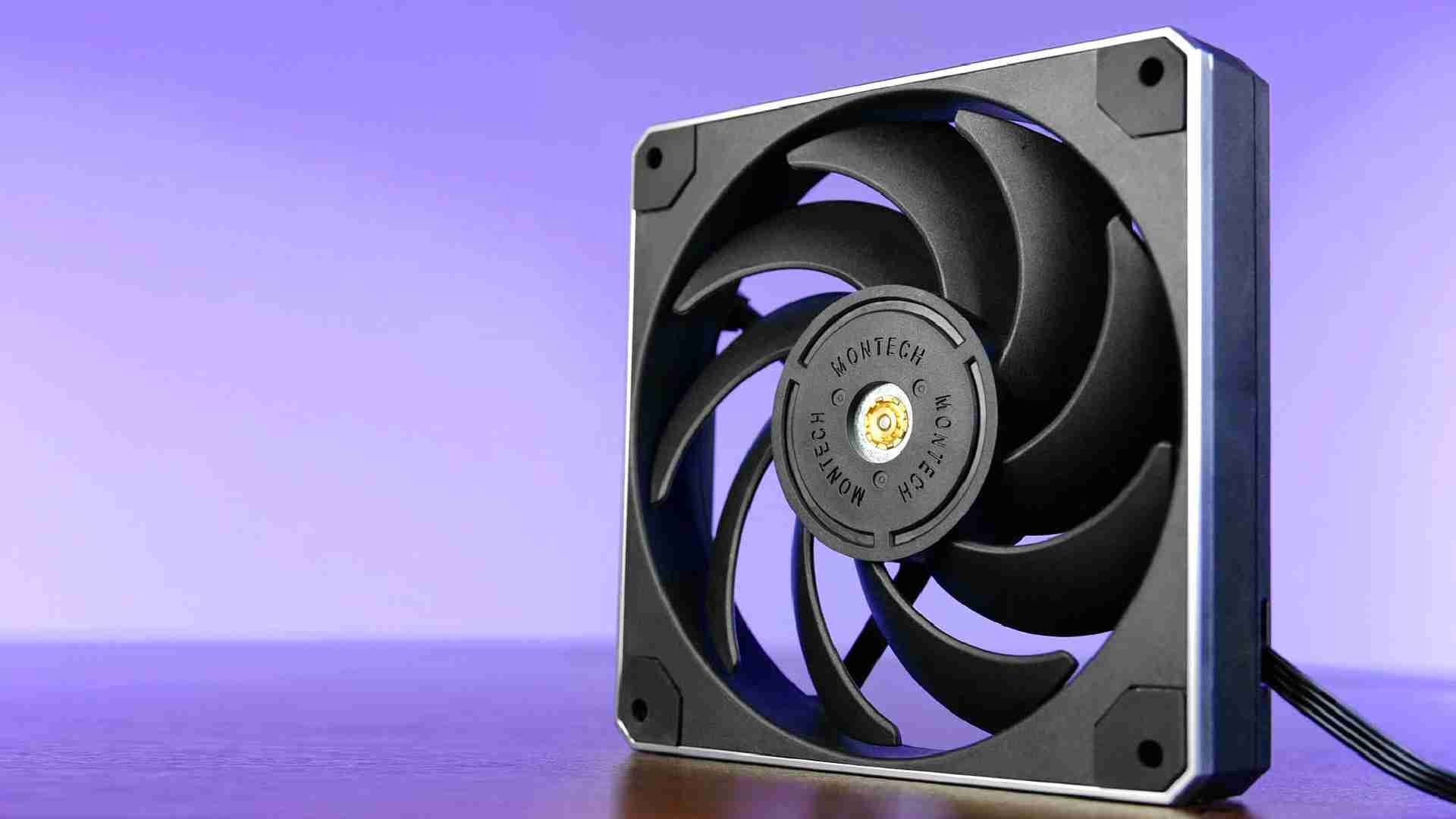
Montech Metal 120 Review
Montechs newest Metal 120 PWM fan promises solid performance inside a solid frame. Looking pretty indestructible, Montech is
Read More
Phanteks Evolv X White Review
After re-releasing their case in a Matte White finish, lets take a look at Phanteks Evolv X in White and see if their Evolv c
Read More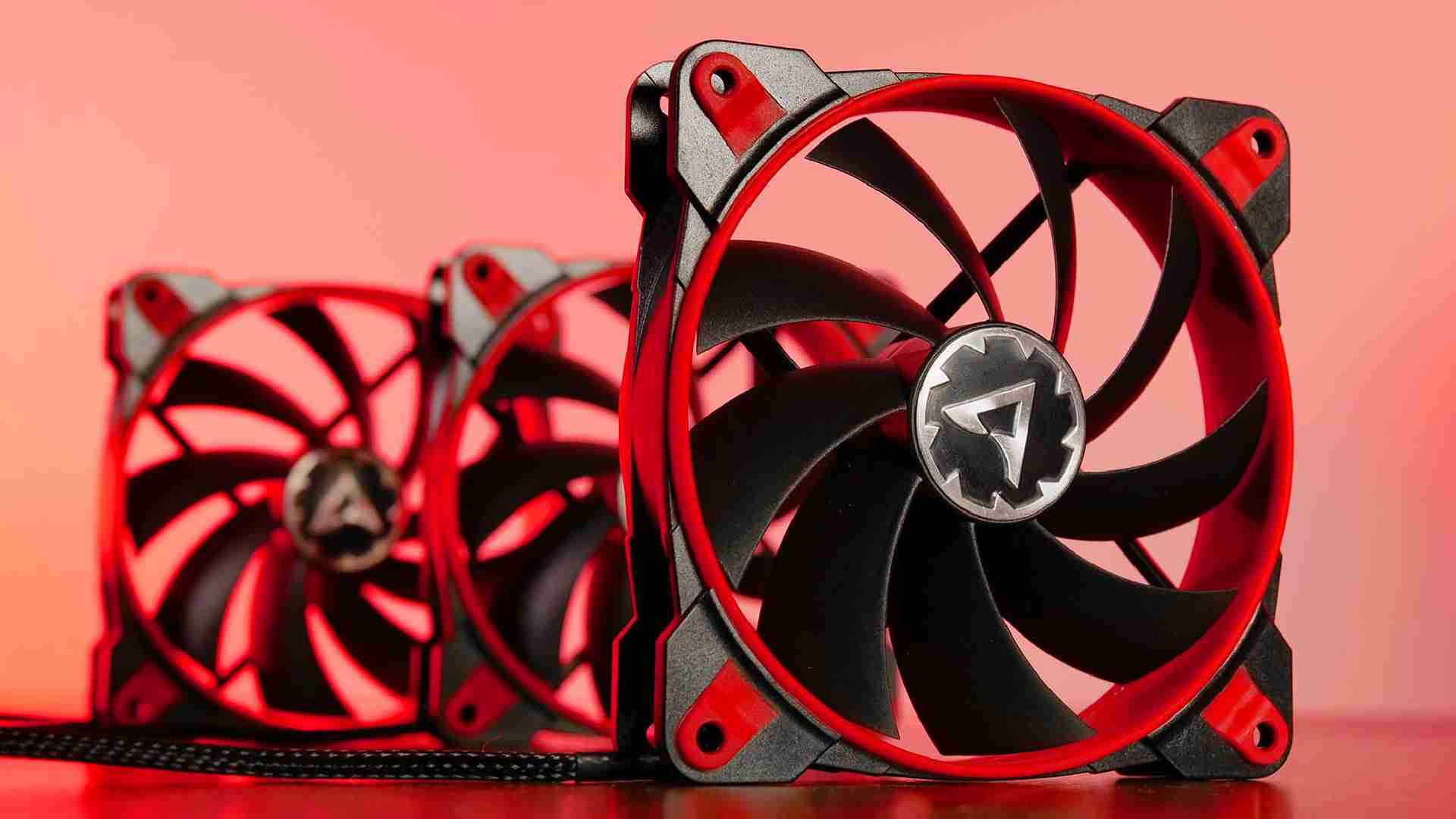
Arctic Bionix F120 Review
With the Bionix F120, Arctic tries to bring color to your PC System. But instead of the usual RGB way, Arctic went with the p
Read More
Phanteks P500A Review
About a year ago, we already had a look at Phanteks P200A. Now, lets find out if Phanteks bigger Mid-Tower sized P500A can de
Read More